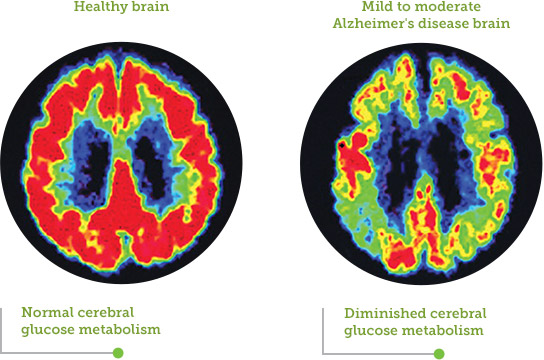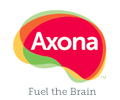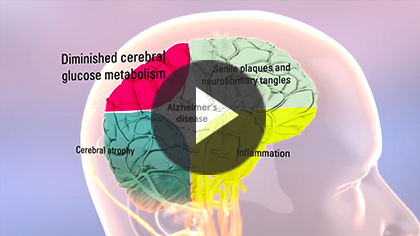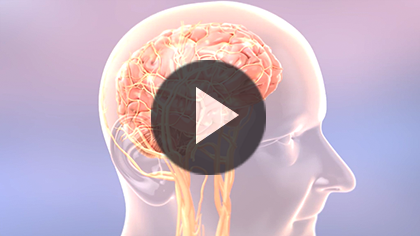Brain imaging for Alzheimer’s
Brain scans may be able to help doctors diagnose Alzheimer’s early1,2
A new study reports that positron emission tomography (PET) scans may be able to not only diagnose Alzheimer’s disease sooner than current methods, but also track the disease’s progression. This is potentially a huge breakthrough in the struggle to diagnose Alzheimer’s early.
Currently, it’s only possible to diagnose the disease after symptoms have started, using a combination of medical exams, brain scans, and a thorough medical history. Early diagnosis is so important because it can give people a better chance of benefiting from treatment. There’s also research being done to look for new therapies that treat Alzheimer’s earlier, which along with early detection, could hold hope for the future of Alzheimer’s treatment.
What the new brain scan can mean for Alzheimer’s treatment1
An article on Forbes.com summarizes what the findings of the study could mean. Read below for 5 important takeaways from the article:
- This new method using PET scans focuses on finding tau, or tangles, which are commonly found in the brains of people with Alzheimer’s. This is different than current methods of diagnosis, which usually focus on finding plaques in the brain
- By combining both methods, one that looks for tangles and one that looks for plaques, doctors may one day be able to diagnose Alzheimer’s before symptoms occur and may even be able to track whether the disease is getting worse
- The National Institutes of Health recently gave $45 million to test potential treatments for Alzheimer’s, especially those that target the disease early on. Changes to the brain usually happen years before someone starts to feel symptoms of Alzheimer’s, but right now doctors have no way of knowing about it
- In the future, the hope is that doctors can use these new brain scan techniques to diagnose Alzheimer’s early. And new treatments that are developed could potentially reverse the damage being done to the brain years before someone even notices symptoms
- It’s still a long way away until these potential scans and treatments are finalized, and there’s no guarantee they will work. But with a growing number of people affected by Alzheimer’s, it’s good to know that progress is being made
Another way brain scans can help people with Alzheimer’s3,4
Researchers have discovered something besides plaques and tangles in the brains of people with Alzheimer’s using scans such as the PET scan:

Image source: Small GW, Ercoli LM, Silverman DHS, et al. Cerebral metabolic and cognitive decline in persons at genetic risk for Alzheimer's disease. Proc Natl Acad Sci USA. 2000;97(11):6037-6042. Copyright 2013 National Academy of Sciences, U.S.A.
Researchers found something in people with Alzheimer’s called diminished cerebral glucose metabolism (DCGM). The engines inside brain cells (called neurons) normally use glucose (a type of sugar) as the primary fuel source to power the brain’s activities. But when DCGM occurs, the engines inside neurons become defective. Even if there is enough glucose in the body, neurons cannot use it properly.
Axona is a non-drug prescription therapy that addresses the problem of DCGM and enhances memory and cognition.*



